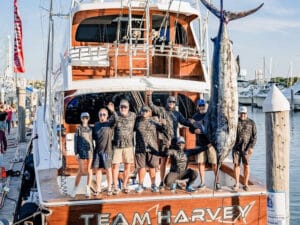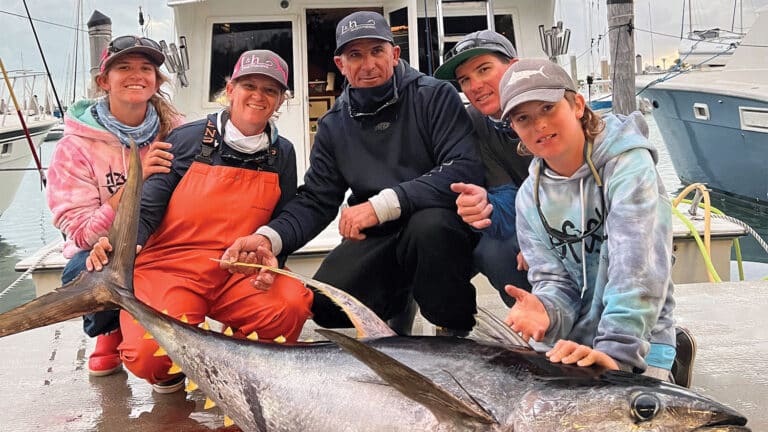In a new scientific paper Dr. Molly Lutcavage, and her colleagues Drs. Gilad Heinisch, Hanna Rosenfeld, Jessica M. Knapp and Hillel Gordin have discovered the critically important fact that western Atlantic bluefin tuna are sexually mature at a much younger age then currently assumed in ICCAT stock assessments. The accuracy of the input of size and age at sexual maturity in stock assessments is crucial for precise determination of spawning stock biomass (SSB) which is used as a key reference point to determine the health of a fish stock and its reproductive potential.
Applying a new approach utilizing a well characterized hormonal mechanism, which was part of Heinisch’s PhD research, Dr. Lutcavage’s team found that bluefin sampled in the Gulf of Maine and off Canada are sexually mature at 61 inches (155 cm) curved fork length (CFL), with some males beginning to mature at 52 inches (132 cm) CFL, considerably younger than age 9 currently used by NMFS and ICCAT to estimate the spawning stock biomass. The authors note that “Recent studies show that bluefin in the eastern and western Atlantic grow at the same rates, eat similar prey, and can mix on the same Atlantic feeding grounds early in life. With similar life histories, it’s hard to see they could maintain vastly different maturity schedules.” Eastern Bluefin are documented spawners at age 3-5 years old.
The team of scientists published their cutting edge research last month in Nature’s prestigious ‘Scientific Reports’ where it underwent rigorous peer review prior to publication. Nature’s Scientific Reports is one of the top ranked journals for natural and clinical sciences in the world today. The new approach of Dr. Lutcavage’s team overcomes the limitations of the National Marine Fishery Service (NMFS) procedure of only sampling the size of catches on the known spawning grounds as an indicator of sexual maturity. This strategy ignored the possibility of alternative spawning scenarios which has always seemed likely given the much younger Mediterranean sexual maturity and the unlikelihood that such “an intrinsic feature of growth and life history schedules would vary widely” as maintained by the current biological and management assumptions originating from NMFS estimates.
According to Dr. Lutcavage “We needed to analyze sexual maturity in bluefin of different sizes where they mix, on their feeding grounds such as the Gulf of Maine. But since this is not a breeding location, fish lack the obvious characteristics of those in spawning condition. We had to come up with a novel approach … (and) endocrine tools, recently developed in Israel for bluefin aquaculture, were just what we were looking for.” She further notes that “Endocrine profiling, however, provides alternative direct and accurate information on sexual maturation.”
In the most recent October 2014 stock assessment, under the current NMFS age 9 hypothesis, the spawning biomass of age 9 through age 16+ estimates 136,745 individual spawners. Using the Heinisch et al. new scientific findings of western sexual maturity by age 5-6 the corrected number of fish in the spawning stock biomass will be substantially higher.
This new peer reviewed science and scientific advice could not be any clearer and takes a step toward improving the stock assessment with fishery independent science, a goal that fishermen and researchers have shared for a long time. The authors note that “Therefore a revision of the western ABFT maturity schedule is warranted”. Tens of thousands of western Atlantic bluefin fishermen and stakeholders anxiously await the ICCAT Bluefin Working Group and SCRS adoption and implementation in the next stock assessment of the “best available science” on sexual maturity of western Atlantic bluefin tuna.







